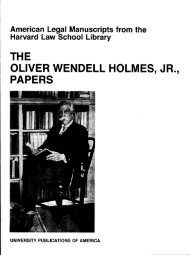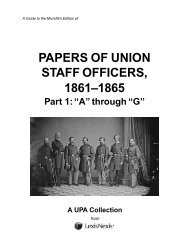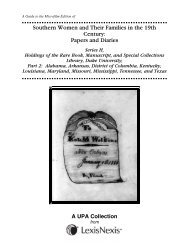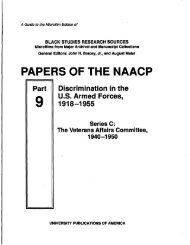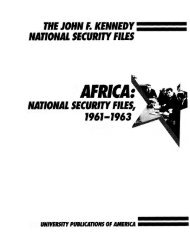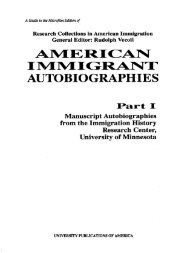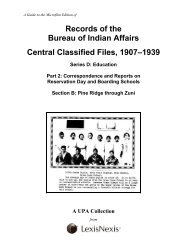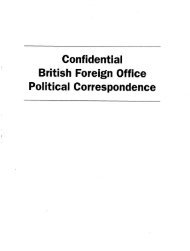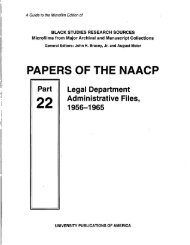You also want an ePaper? Increase the reach of your titles
YUMPU automatically turns print PDFs into web optimized ePapers that Google loves.
signaling to the world that it had developed a fully integrated economy. Bilateral talks<br />
that began in 1959 brought about a new Treaty of Mutual Cooperation and Security,<br />
signed on January 19, 1960. The treaty set the parameters of Japanese military<br />
power and ensured that the United States would return all Japanese territories<br />
acquired in the war, including the Bonin Islands, which were restored to Japanese<br />
administrative control in June 1968.<br />
The 1964 Summer Olympics, held in Tokyo, Japan, marked the astonishing<br />
technological advancements and sweeping social changes in postwar Japan. The<br />
1964 Olympic Games, the first ever held in Asia, established Japan as a leader in<br />
Asia and assured the world that democracy had taken root in Japan. Special Files<br />
Northeast Asia devotes considerable attention to the television coverage of the<br />
games (Reel 13, Frame 0596–Reel 20, Frame 0196). Using the first geostationary<br />
communication satellite, the United States successfully transmitted the Tokyo<br />
Olympics to millions of American viewers, the first time a television program crossed<br />
the Pacific Ocean.<br />
Less visually dramatic ties between the United States and its allies in Northeast<br />
Asia included passage of Title I of the Agricultural Trade Development and<br />
Assistance Act of 1954, better known in its amended form as Public Law 480 (PL<br />
480), the Food for Peace Act. Developing countries with lower foreign exchange<br />
earnings and food shortages were eligible under PL 480 for U.S. government–<br />
financed sales of U.S. agricultural commodities on a basis of special credit (Reel 20,<br />
Frame 0044–Reel 21, Frame 0183).<br />
The Southeast Asia Treaty Organization (SEATO) was established in the same<br />
year, consisting of eight member nations. Originally conceived as an organ of the<br />
U.S. cold war policy of containment, a chronic lack of unanimity rendered SEATO<br />
feckless in diffusing the rising tensions in Indochina. This collection includes the<br />
SEATO papers (Reel 23, Frame 0791–Reel 24, Frame 0195), along with notable<br />
documentation of the organization’s role in regional security (Reel 30, Frame 0776–<br />
Reel 36, Frame 0686).<br />
Special Files Northeast Asia offers valuable insight into U.S. diplomatic and public<br />
opinion on the rising Japanese economy, prospects for Korean unification, and the<br />
struggle between the “two Chinas” for international legitimacy. Perhaps most striking<br />
in this collection is the manner in which U.S. officials underestimated Japan’s<br />
economic resiliency and the potential for sustained economic development in the<br />
region.<br />
vi



